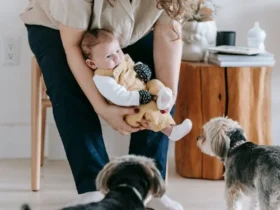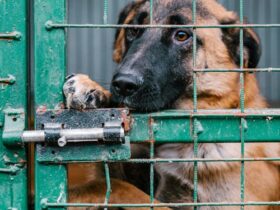The New Pet Parent’s Guide to Adopting an Adult Dog
Adopting a dog is a rewarding and life-changing decision, but it comes with responsibilities and considerations. While puppies are often the first choice for new pet parents, adult dogs also make wonderful companions and can offer many advantages. If you’re considering adopting an adult dog, this guide will help you navigate the process with confidence. From preparation and finding the right match to integrating your new dog into your home, here’s everything you need to know.
1. Why Adopt an Adult Dog?
Before diving into the adoption process, it’s important to understand the unique benefits and challenges of adopting an adult dog:
- Established Temperament: Adult dogs often have a well-established personality, which can make it easier to assess if they fit your lifestyle. What you see is usually what you get.
- Reduced Training Needs: Many adult dogs are already house-trained and may know basic commands. This can make the transition smoother compared to a puppy that requires extensive training.
- Less Time Commitment: Adult dogs often require less constant supervision and training, which can be a benefit for busy families or individuals.
- Saving a Life: Adopting an adult dog from a shelter or rescue can be a life-saving act. Many adult dogs are overlooked in favor of puppies, so your choice can make a significant difference in their lives.
2. Preparing for Adoption
Preparation is key to ensuring a smooth transition for both you and your new dog:
- Assess Your Lifestyle: Consider your daily routine, work schedule, and activity level. Make sure you can meet the needs of an adult dog, including exercise, mental stimulation, and companionship.
- Prepare Your Home: Create a safe and comfortable space for your new dog. This includes a cozy bed, food and water bowls, and toys. Dog-proof your home by removing hazards and securing items that could be harmful.
- Financial Planning: Owning a dog involves costs beyond adoption fees, including food, grooming, veterinary care, and potential emergencies. Make sure you’re prepared for these expenses.
3. Finding the Right Match
Finding the right adult dog involves more than just picking the first one that catches your eye:
- Visit Shelters and Rescues: Spend time at local shelters and rescue organizations to meet different dogs. Many places have detailed profiles of their dogs, including temperament, health history, and any special needs.
- Ask the Right Questions: When considering a dog, ask about their health, behavior, and history. Inquire about any known issues or special care requirements. Understanding their background can help you make a more informed decision.
- Consider Compatibility: Think about the dog’s energy level, size, and temperament in relation to your home environment and lifestyle. For example, a high-energy dog might not be the best fit for a small apartment, while a calm and adaptable dog may thrive in such a setting.
4. The Adoption Process
Once you’ve chosen a dog, there are several steps to complete the adoption process:
- Application: Fill out an adoption application form. This usually includes information about your home, experience with pets, and preferences for the dog.
- Home Visit: Some shelters or rescues may require a home visit to ensure that your living situation is suitable for the dog.
- Adoption Fee: Be prepared to pay an adoption fee, which helps cover the cost of the dog’s care and medical expenses. Fees can vary depending on the organization and the dog’s age or breed.
- Trial Period: Some organizations offer a trial period or foster-to-adopt program. This allows you to spend time with the dog and ensure it’s a good fit before making a permanent commitment.
5. Bringing Your Adult Dog Home
Once the adoption is finalized, it’s time to bring your new dog home. Here’s how to make the transition as smooth as possible:
- Gradual Introduction: Introduce your new dog to their new home gradually. Allow them to explore their new environment at their own pace and provide plenty of positive reinforcement.
- Establish a Routine: Dogs thrive on routine. Establish consistent feeding times, exercise schedules, and bedtime routines to help your new dog adjust.
- Provide Basic Training: Even if your dog is already trained, it’s beneficial to reinforce basic commands and establish rules for behavior. Positive reinforcement techniques work best for building a strong bond and ensuring good behavior.
- Socialization: Continue socializing your dog with new experiences, people, and other animals. This helps them adjust to their new life and build confidence.
6. Health and Wellness
Ensuring your adult dog’s health and well-being is crucial:
- Veterinary Care: Schedule a veterinary check-up shortly after adoption to assess your dog’s health and update vaccinations if needed. Discuss any concerns or special needs with your vet.
- Nutrition: Provide a balanced and nutritious diet tailored to your dog’s age, size, and health requirements. Your vet can recommend the best food options.
- Grooming: Regular grooming is important for maintaining your dog’s health and comfort. Depending on the breed, this might include brushing, bathing, and nail trimming.
7. Building a Bond
Building a strong bond with your new dog takes time and effort:
- Quality Time: Spend quality time engaging in activities your dog enjoys, whether it’s playing fetch, going for walks, or simply cuddling.
- Patience and Understanding: Be patient as your dog adjusts to their new home. Understand that they may need time to feel comfortable and secure.
- Positive Reinforcement: Use positive reinforcement to encourage good behavior and strengthen your relationship. Reward your dog with treats, praise, and affection for desired behaviors.
8. Handling Challenges
Adopting an adult dog can come with its own set of challenges:
- Behavioral Issues: Some adult dogs may have behavioral issues stemming from past experiences. Work with a professional trainer or behaviorist if needed to address these issues.
- Health Concerns: Be prepared for potential health issues, especially if your dog is older. Regular veterinary care and a healthy lifestyle can help manage and prevent many health problems.
- Adjustments: Both you and your dog will need to adjust to each other. It’s normal to face some challenges during this period, but with time and effort, these can usually be overcome.
Conclusion
Adopting an adult dog is a deeply rewarding experience that can bring joy and companionship into your life. By understanding the unique aspects of adult dog adoption and preparing properly, you can ensure a smooth transition and a happy, healthy life for your new furry friend. Remember, every dog deserves a loving home, and by choosing to adopt an adult dog, you’re giving a deserving animal a chance at a new beginning.











Leave a Reply